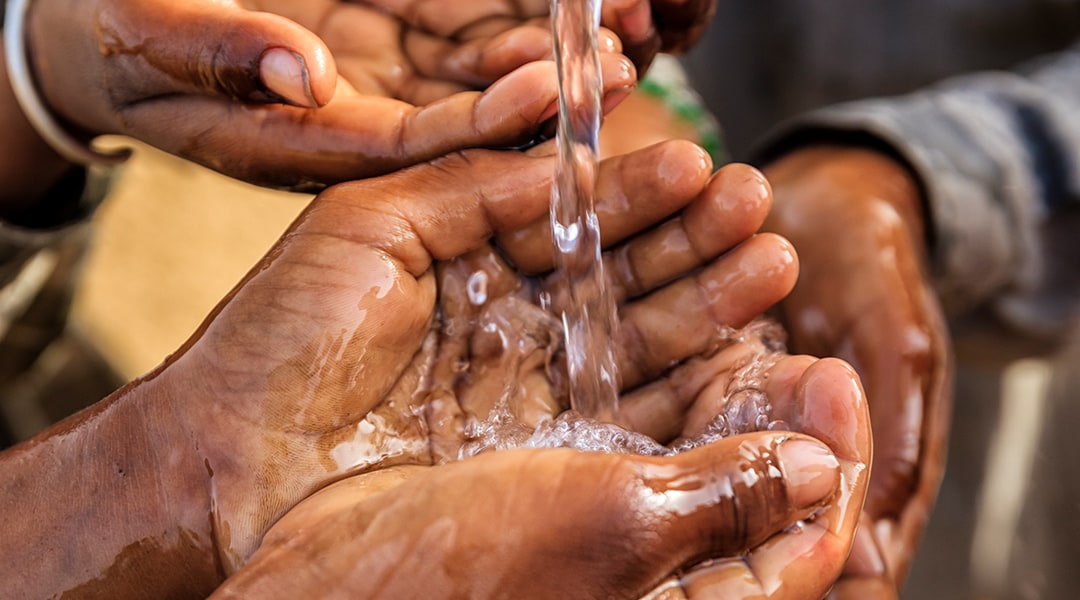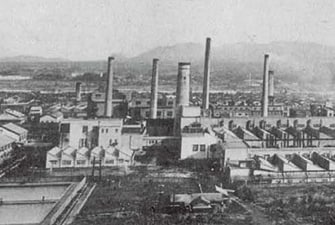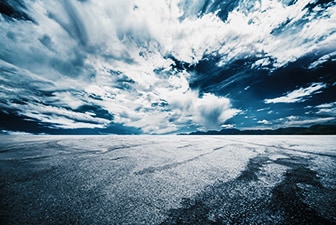#08
Membrane innovation turns seawater into freshwater
– giving life where hope runs dry
The global water crisis is being tackled with new technologies – with encouraging results. Specialized water-purification membranes can separate the salt from seawater and deliver clean water to millions of people worldwide.

A view of the earth from outer space shows a planet covered in water, with continents separated by vast stretches of blue. Yet freshwater available to humans represents less than one percent of the water in our world. Oceans hold more than 97 percent of the planet’s water. And as climate change, industrial development and population growth drive water scarcity to critical levels, millions of people risk dying surrounded by the most fundamental resource for human life.
One of the most powerful solutions to the global water crisis is a membrane that transforms seawater into freshwater – bringing hope to some of the world’s most parched regions. Japan’s Toray is at the forefront of this technology that delivers clean water to millions of people every day, on every continent. The membrane can even transform wastewater into freshwater, an important means of recycling and reusing scarce water and improving sanitation in poor communities.
The scary scale of the water crisis
While the United Nations recognizes access to safe water as a human right, more than two billion people still lack access to clean water and two-thirds of people in the world face severe water scarcity for at least one month a year. This makes innovative technologies increasingly vital.
Toray’s reverse-osmosis membrane, made of synthetic polymers, is a semi-permeable material with pores of 0.6 to 0.8 nanometers in diameter. For a sense of how minuscule that is, one nanometer is one millionth of a millimeter. When seawater is pumped through the membrane, it prevents salt and other impurities from seeping through its pores, allowing freshwater to emerge on the other side.
The process is called reverse osmosis because water moves naturally across a membrane from an area of low concentration of solute – the substance dissolved in a solution – to one of high concentration. Here the process is reversed as external pressure forces water molecules through the microscopic pores, leaving substances such as salt and dirt particles behind. The challenge for membrane manufacturers such as Toray has been to improve the permeability and durability of desalination membranes through advanced chemistry.
One of the main advantages of reverse-osmosis water treatment is its lower energy consumption compared to conventional evaporation desalination – a significant factor in climate-change mitigation. According to the 2018 World Bank report Beyond Scarcity: Water Security in the Middle East and North Africa, seawater reverse osmosis consumes as little as a fifth of the energy used in thermal evaporation. And while the costs of reverse-osmosis systems are higher, the bank says they have fallen steadily to roughly $0.53 per cubic meter for many large-scale projects – a trend that is expected to continue.
“Next-generation, highly selective desalination membranes will represent an important advance,” the report says. “Enhanced membrane selectivity will play a significant role in improving water quality and eliminating the need for additional separation stages... thereby reducing energy usage and the cost of desalination.”
The global reach of membrane technology
The impact of reverse-osmosis technology is felt around the world, enhancing life in places rich and poor. In Singapore, Toray’s reverse-osmosis membrane is used for 50 percent of the clean water produced in the city-state by membrane process. Before embracing this technology, Singapore had to import most of its water because of its tiny land-mass and lack of freshwater resources. Now it is on the path to water self-sufficiency.
Meanwhile in Bangladesh, one of Asia’s poorest nations, Toray’s water-treatment membranes are being used in a Japanese government-sponsored aid program to bring drinking water to villages with water-treatment vans that roam the country. Each of the 30 units fitted with reverse-osmosis and ultra-filtration membranes can supply clean water for between 300 and 500 people per day. The need to bring safe water to emerging nations is urgent: the World Health Organization (WHO) estimates that 361,000 children under the age of five years die every year from diarrhoea caused by contaminated water and poor sanitation.
Overall, Toray’s water-purification membranes are used in 76 countries, delivering more than 50 million cubic meters on a cumulative basis – the equivalent of the daily freshwater needs of 400 million people.
The world faces a water crisis with terrible human consequences. Membrane technology is allowing currents of life to flow in places of greatest need.



